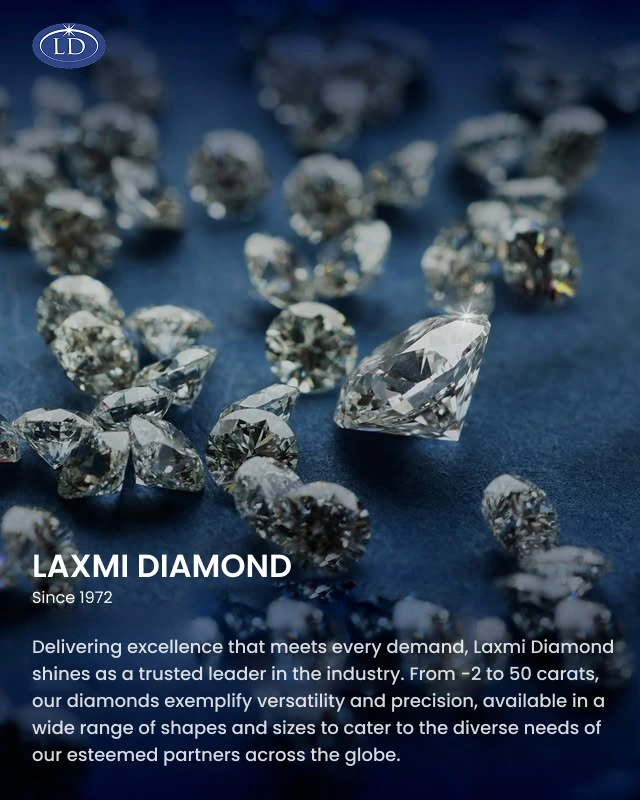
The Shift Shaping The Future Of The Diamond Industry
Since age as old as time, the existence and evolution of diamonds have fascinated humankind. Yet, when these gemstones were first discovered, there was no clear or uniform understanding of diamonds' nature, purpose, or significance.
As time passed and better understanding came to light, it gave rise to the quest for finished, polished diamonds. And in the early 18th and 19th centuries, major diamond producing countries started with the extraction, transportation, and production of diamonds to meet the rising demand. Following the route, the industry picked up the pace, and a traditional value chain was established.

The Start
Traditionally, the journey of a diamond from rough to ready starts from exploration and goes through several manual and machine processes before reaching the retail route. Undoubtedly, several process improvisations with technological developments have been implemented over the years. May it be advancements in machinery or the adoption of new styles and techniques, the diamond industry has kept up with the challenges and come a long way, now ready to welcome an utterly dynamic transition.

The Shift
In the past few years, digitisation has altered every aspect of human life. As a result, every industry has evolved with the shift in communication, work, shop, travel, or purchase. The same stands true for the diamond industry. Especially after the Covid-19 pandemic, the industry has seen a shift in every step, starting right from mining to jewellery.
The Evolved Value Chain
As the times called for it, the pandemic period saw the diamond industry inclining towards the digital route for B2B and B2C trade. But, as it remains, the opportunity to see and feel diamonds and access in-person advice significantly contributes to the diamond buying process. Therefore, many consumers still prefer the brick and mortar format.
This transition was certainly not easy, but the industry left no stone unturned. Manufacturers and sellers stepped up to enhance customer convenience with virtual showcase events, try before paying programs, free delivery or returns and more. Additionally, improvement of customer trust came into action with the provision of certificatNeosn, ereviews and warranties.
Processes At Laxmi Diamond
At Laxmi Diamond, the traditional diamond value chain starts with the procurement stage. The company’s D2C sightholder accreditation and global network ensure conflict-free, ethically sourced inventory. In light of the manufacturing and production process, different departments at Laxmi Diamond cater to the planning, cleaving, sawing and polishing of diamonds. These processes are undertaken by connecting expert craftsmanship with the latest technological developments.

Shifting from the brick and mortar format, Laxmi Diamond also offers added convenience to its customers with a Web and Mobile Application for diamond buying. The App allows the customers to scan through the inventory of exclusive, loose certified diamonds. Adding to the experience, customers can also view the stones from a 360-degree angle and access the diamond’s GIA certificate from within the App. Additionally, the app's ‘Price Calculator’ feature provides a price index of loose diamonds based on the selected shape, colour, and clarity.

The Way Ahead
Digital advancements are shaping the industry's future with benefits for manufacturers and customers. The transition offers added convenience, transparency, and accessibility throughout the value chain. Therefore, the emerging trends that will shape the new normal of the diamond industry include:
Blockchain For Procurement
Blockchain technology is picking up the pace in the diamond industry as it addresses the need for ethical sourcing. The information collected from all the involved stakeholders creates a digital mirror for each diamond, allowing access to a complete picture of all that a gemstone has been through. Adoption of this technology can reduce cost, improve optimisation, and provide more traceability, transparency, and audibility with real-time updates.
AI Grading
For a long time, diamond grading has been a manual process. But, AI-based grading of diamonds could be a revolutionary game-changer in the industry. This technology helps go beyond the grader’s knowledge and offers more consistency, accuracy and efficiency.

Technology-powered Certification
With greater consciousness and awareness, evidence of ethical sourcing will hold the utmost significance in the diamond industry. Furthermore, with the help of technology-enabled credible sources, the industry will ensure traceability and provenance with data-backed sources. Hence, the foreseeable future will witness a surge for verifiable data and technology-driven diamond journey reports.
Hybrid Retail
The start of the shift in the diamond value chain was certainly pandemic-driven, but it is here to stay. There has been a significant shift in customer purchase behaviour, and digital mediums are winning in the long run. As a result, brands and companies will have to ensure a fine balance and focus on driving values through digitisation to customers. While the tactile, in-store format will still hold significance, it will be imperative for the industry to maintain the supply chain and improve customer experience in a digital environment.
The Industry Dynamics
Diamonds are certainly forever. But, their value chains are not. While the industry has not strayed entirely from the traditional value chain, there has been a significant shift. According to Brain & Company reports, B2C commerce in the diamond industry saw a 20% growth in retail sales occurring online. In addition, about 70 per cent of consumers resorted to digital tools for research diamonds and jewellery before making the final purchase. While the complete shift may not be in the books for the diamond industry, the call for a balance between physical and digital is undoubtedly shaping the future with the phygital approach.








